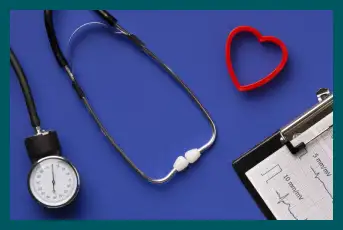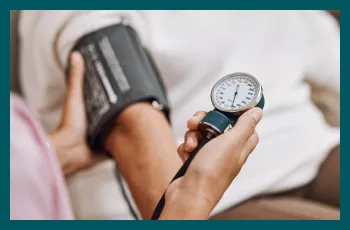Systolic vs diastolic: Understanding the difference
Written by the editorial staff writer at Hola. Medically Reviewed by Dr Gosagan Gopalakrishnan, BSc (Hons), MBChB, DRCOG, MRCGP, FRACGP and Dr. Ammar AL-ANI, MBChB, CCBST, AMC. Blog updated on 10 November, 2025. Originally published on 04 September, 2024.

Contents

Overview
Blood pressure reflects how hard your heart works to circulate blood. It’s measured using two numbers — systolic and diastolic — which reveal how your heart beats and rests. Understanding these values helps detect early signs of heart disease and keep your cardiovascular system healthy. In Australia, approximately one in every three adults has high blood pressure1, yet many remain unaware. Understanding the significance of those two numbers can motivate you to take action.Understanding the two phases of the heartbeat
Here’s a simple way to understand what’s going on inside your chest:| Phase | What happens | Blood pressure reading |
| Systole | The heart contracts (squeezes) and pumps blood out | Systolic pressure (the top number) |
| Diastole | The heart relaxes and refills with blood | Diastolic pressure (the bottom number) |
Systolic vs diastolic: What’s the difference?
Each of these pressures gives a unique insight into cardiovascular health:- Systolic pressure is more closely linked to stroke and heart disease in older adults.
- Diastolic pressure is important in younger people for assessing arterial health
Blood pressure - Normal vs high vs low
Here’s a reference table of typical categories (in mmHg):| Category | Systolic (mmHg) | Diastolic (mmHg) |
| Normal | <120 | < 80 |
| Elevated | 120 - 129 | < 80 |
| Hypertension Stage 1 | 130 - 139 | 80 - 89 |
| Hypertension Stage 2 | ≥140 | ≥90 |
| Hypertensive crisis (urgent) | > 80 | > 120 |
Feeling sick and unsure why? Speak with a GP online in 15 minutes.
Short- and long-term effects on your body
High blood pressure (hypertension):
- Short-term: Often symptomless, but may cause headaches and dizziness.
- Long-term: It can damage blood vessels and organs, increasing the risk of heart attack, stroke, kidney disease, aneurysms, vision problems, and more.
Low blood pressure (hypotension)
- Short-term: Dizziness, blurred vision, fainting, or lightheadedness.
- Long-term: If prolonged and severe, low BP may lead to poor concentration or fatigue. In extreme cases, it may contribute to shock.
Prevention tips
Managing high blood pressure:
- Reduce salt intake (aim for < 4 g salt per day if you have hypertension)
- Eat a diet rich in fruits, vegetables, whole grains, and lean proteins (DASH diet)
- Exercise 30 minutes daily
- Manage stress
- Limit alcohol
- Quit smoking
- Monitor your blood pressure at home
- Follow your GP’s advice and take the prescribed medications regularly
Managing low blood pressure:
- Stay well hydrated and avoid skipping meals
- Under medical advice, increase your salt intake
- Consider compression stockings
- Eat smaller, frequent meals
- Avoid sudden posture changes
When to consult GP
See a GP if:- You experience frequent headaches, dizziness, chest pain, fatigue, or vision changes
- You get persistent readings above 140/90 mmHg or below 90/60 mmHg
- You need to understand your personal blood pressure goals, based on your health history
How Hola Health can support
Managing your blood pressure doesn’t need to be complicated. Hola Health offers quick, confidential online telehealth consultations with Australian-registered doctors — all from the comfort of home. Our team can help you:- Get online prescriptions and renewals
- Access blood pressure medication and monitoring plans
- Receive digital medical certificates or specialist referrals
- Schedule same-day consultations and medication delivery
Conclusion
Understanding systolic and diastolic pressure empowers you to take charge of your heart health. Regular monitoring and lifestyle care make a huge difference. If your readings fluctuate or symptoms persist, speak with a Hola Health GP online today and keep your heart in check.FAQs
What’s the best time to measure blood pressure?
Early morning (right after waking, before taking any medicines or eating) and evening are common times. Try to measure around the same time each day for accurate comparison.Can stress temporarily raise blood pressure?
Yes, acute stress, anxiety, or other stimulants may cause temporary spikes.Is home monitoring reliable?
Yes, if you use a clinically-approved upper-arm monitor and follow standard guidelines (rest, correct seating position, and repeat measurements).How often should I check my blood pressure?
If your readings are within the normal range, checking every couple of years is a good rule of thumb. However, if you have high blood pressure or are undergoing treatment changes, you may need to monitor more often.Feeling sick and unsure why? Speak with a GP online in 15 minutes.
Reference
High blood pressure (hypertension) - reference linkWhat we treat
- Cough
- Nausea & vomiting
- Fever
- Hayfever
- Fatigue
- Sore throat
- Acne
- Hair loss
- Gout
- Eczema
- Rosacea
- Sunburn
- UTI
- Erectile dysfunction
- Contraception
- Morning sickness
- Morning after pill
- Prostate health
- Anxiety
- Depression
- Stress
- Grief & loss
- Antidepressants
- Premature ejaculation
- Asthma
- Blood pressure
- Blood thinners
- Diabetes
- Cholesterol
- Migraines & headaches
- Allergies
- Body ache
- Heartburn & reflux
- Sleep disorder
- Pain relief
- Gastro
Related Articles
Healthy Blood Pressure By Age: What Is Good Blood Pressure Based On Age?
Disclaimer
This blog is for general informational purposes only and does not indicate that Hola Health provides all treatments or preventive measures mentioned. It is not intended to be a substitute for professional medical advice. Always seek the guidance of your doctor or other qualified health professional with any questions you may have regarding your health or a medical condition. For emergencies please immediately contact 000. Any medical topics discussed are intended to educate, not to imply availability through Hola Health.
 Facebook
Facebook  X
X  Copy Link
Copy Link



